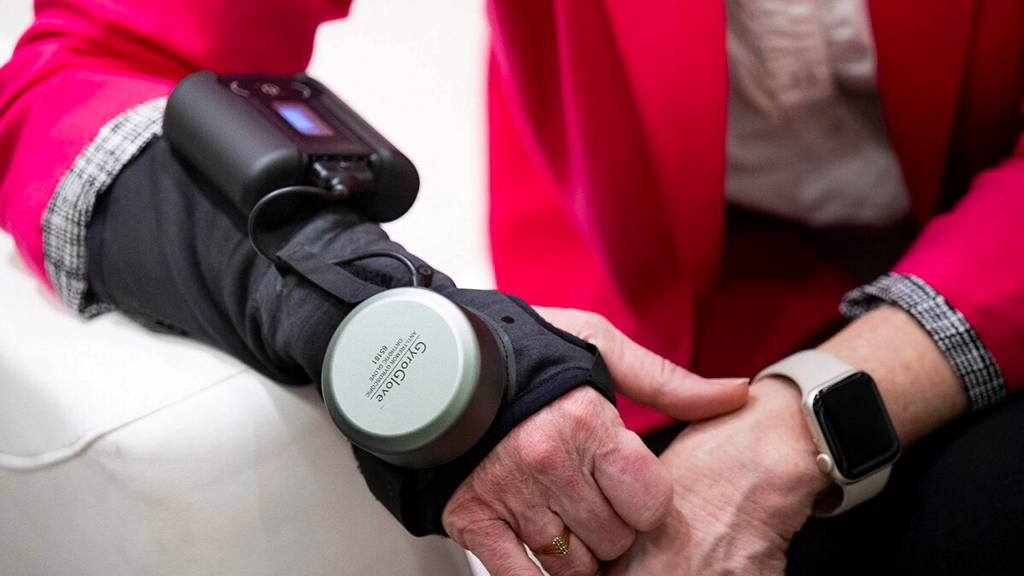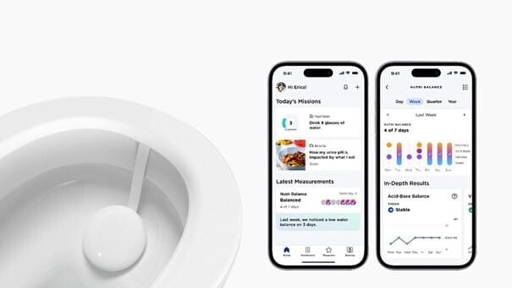Among the hundreds of innovations and launches shown in Las Vegas in early January were intelligent robots, wearables, apps, and a long list of more or less serious gadgets designed to improve well-being.
They had one thing in common: All of them were powered by artificial intelligence, either classic algorithms or generative AI. Just a year ago, AI was only discussed a lot; today, companies want to show that they are on the cutting edge of progress.
The second trend is blurring the line between classical medicine and well-being. Digital health gadgets, which are not medical devices, are already as accurate as their certified counterparts. Beautifully designed, they promise to improve quality of life and strengthen health prevention. On top of that, they offer a much better user experience – not least because their design is not constrained by the standards that apply to medical devices. Many manufacturers don't bother with costly, lengthy validation and reimbursement, targeting the rapidly growing consumer market.
Among the many launches unveiled at CES 2024, we have selected some of the most exciting innovations from the "health and fitness" category.
You can measure four key health parameters with one smart and pretty device.
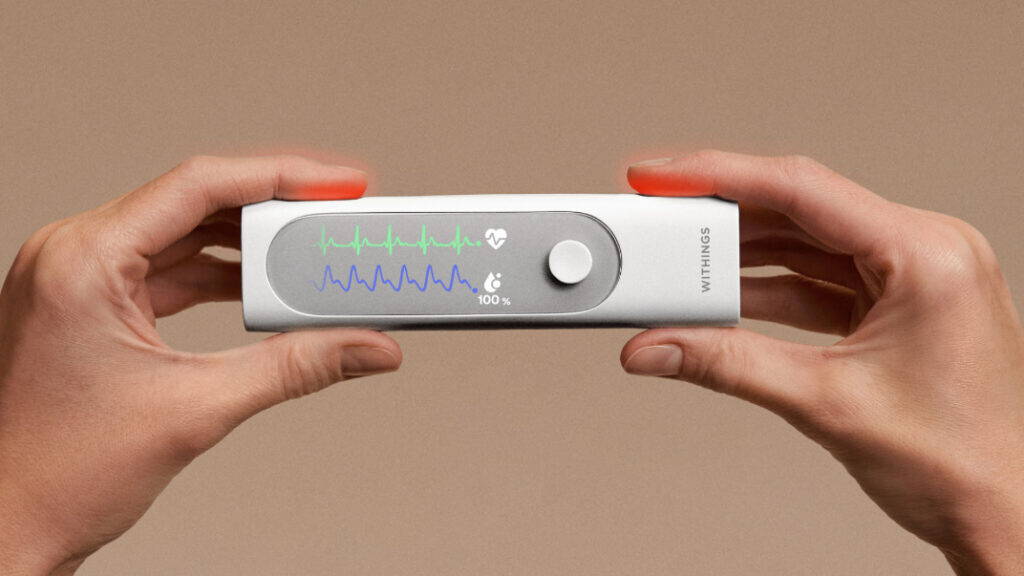
Another trend spotted at CES 2024 is the further miniaturization and consolidation of wearables and health devices. An example is Withings BeamO – an electrocardiogram (ECG), oximeter, stethoscope, and digital thermometer in one solution with an aesthetic design.
The BeamO has some novel features. For example, it uses light wave sensors and acoustic information to detect blood flow and temperature patterns. All measurements are contactless – a digital stethoscope is not applied to the breast as it captures acoustic sounds, allowing accurate examination of the heart and lungs.
It is possible to determine the blood oxygen level and the heart rate. The single-wire ECG uses technology used in higher-end smartwatches such as the Apple Watch. You must grasp the device with both hands to perform an EKG or measure blood oxygen saturation.
BeamO confirms another trend – it's not enough for a medical device to be functional. Now, it also has to be pretty and eye-catching. Although BeamO already premiered at CES 2024, it is not currently available for sale. It must first be approved by the US Food and Drug Administration (FDA). It should be available in Europe in the summer of 2024 after receiving the CE mark. Price: €249,95.
Smart mirrors will assess your health and improve your mood. You will love seeing yourself in the morning.
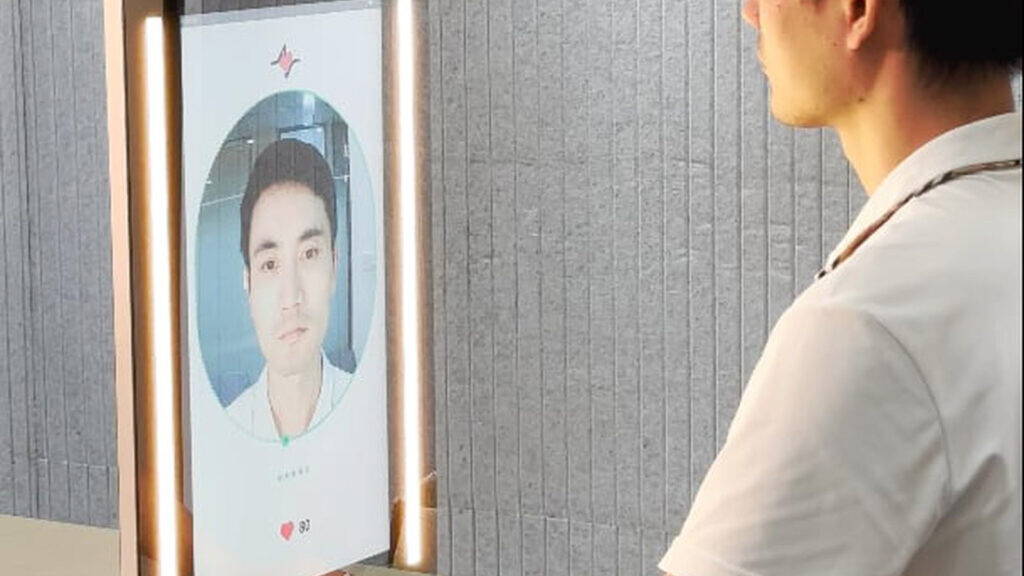
NuraLogix
E-mirrors are nothing new. What is new is what they can do. The Anura MagicMirror from NuraLogix is the first mirror that analyzes facial blood flow and calculates vital signs such as blood pressure based on that. It can estimate the risk of heart disease and determine the user's age based on video analysis of the skin and determine stress levels.
MagicMirror uses the so-called DeepAffex affective artificial intelligence technology. The company hopes that more and more parameters can be measured with this technology. The mirror is meant to be placed in clinics and places such as gyms or shopping malls.
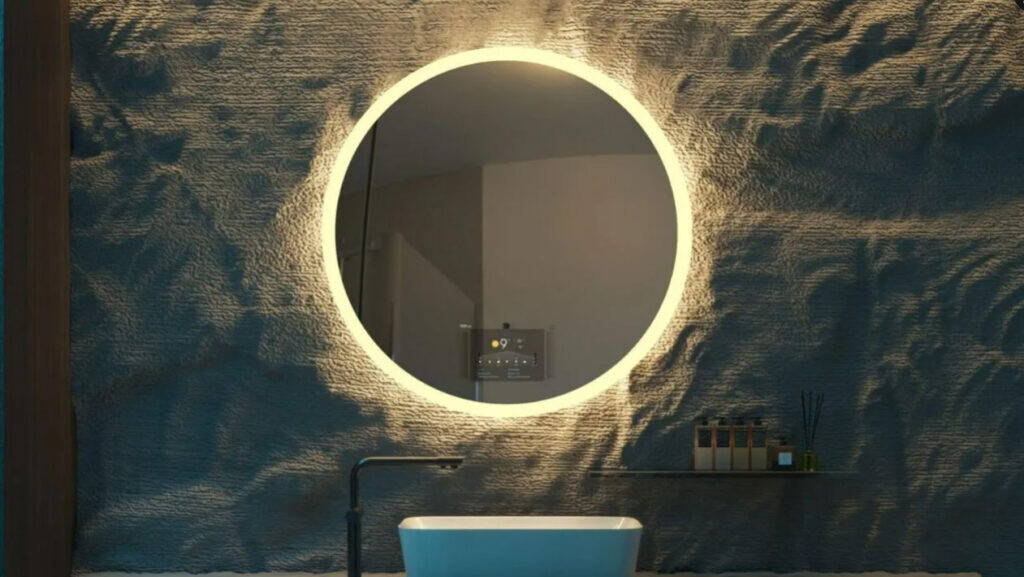
BMind Smart Mirror
Baracoda presented a slightly more lifestyle-oriented version of the e-mirror. The goal is not to measure health parameters but to care about the user's well-being. BMind Smart Mirror uses artificial intelligence and natural language processing to improve self-esteem and mood. The mirror determines stress levels by measuring body parameters and suggests various techniques for improving mental well-being. For example, guided meditation. Baracoda declares that the mirror can even "minimize feelings of loneliness through an immersive experience using light, sound, and visualizations."
Smart beds will optimize your sleep. But it might cost you sleepless nights.
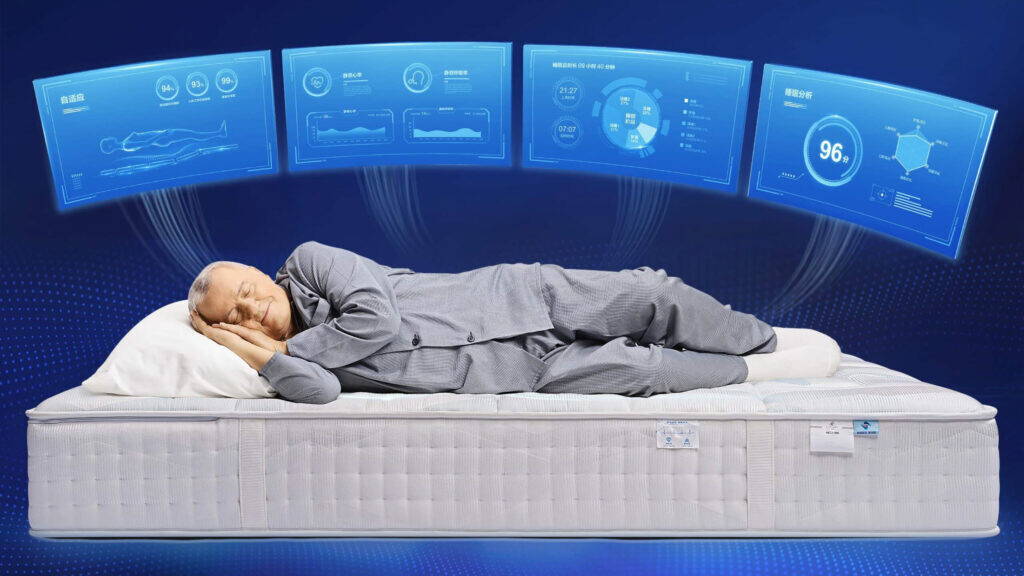
DeRucci
Energy and optimism after a good night's sleep are priceless. But is it so much to pay about $4,000 for an intelligent pillow and $36,000 for a mattress?
A Chinese sleep health company has unveiled a DeRucci intelligent mattress and pillow powered by – of course – artificial intelligence to make you sleep better. The mattress has 23 sensors that detect even small changes in temperature, position, and heart rate throughout the night. The built-in air pillow system continuously adjusts to changes in position to ensure proper support for the spine, neck, and hips. The intelligent bed also regulates temperature to prevent the body from overheating or cooling down. The AI and the system process the collected sleep parameters and warn the bed owner of potential health problems.
DeRucci's smart pillow should prevent snoring. The mechanism is similar – the pillow tracks the position and movements of the head, and when it detects snoring, it adjusts its height and repositioning the sleeper's head. A second application of the e-pillow is to reduce the risk of sleep apnea. Based on an internal clinical study, the company claims that its pillow can reduce snoring by up to 89%.
Interpreter of baby's cries. What does your baby want to tell you?
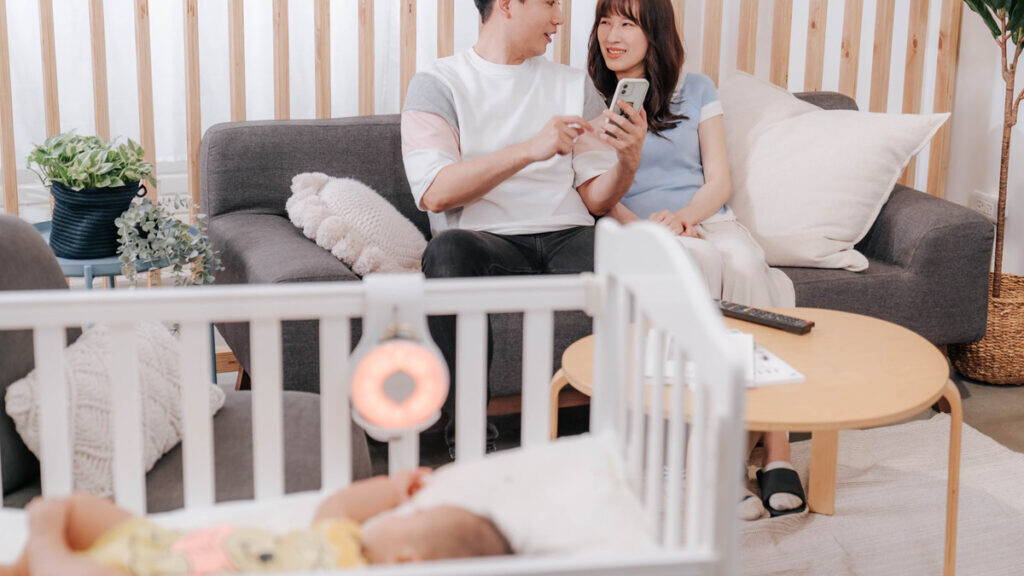
QBear+
When a baby cries, parents wonder what's wrong – but this is a matter of the past. Capella has presented QBear+ - a baby cry translator available as a smartphone application.
The app can interpret a baby's cry and determine whether the baby is hungry, tired, needs a diaper change, or is simply uncomfortable. Artificial intelligence analyzes crying patterns and decodes the infant's needs. Cappella says the technology is about 95% accurate. By comparison, parents can guess a baby's needs 30% of the time. The innovation is based on a mobile app and requires no additional hardware other than a mount that attaches the smartphone to the crib frame. The app costs $10 per month. The company promises that the app will soon be even more accurate: A temperature recognition system – currently under development – will be able to determine whether crying is caused by a temperature that is too low or high.
This Rabbit will allow you to talk to AI.
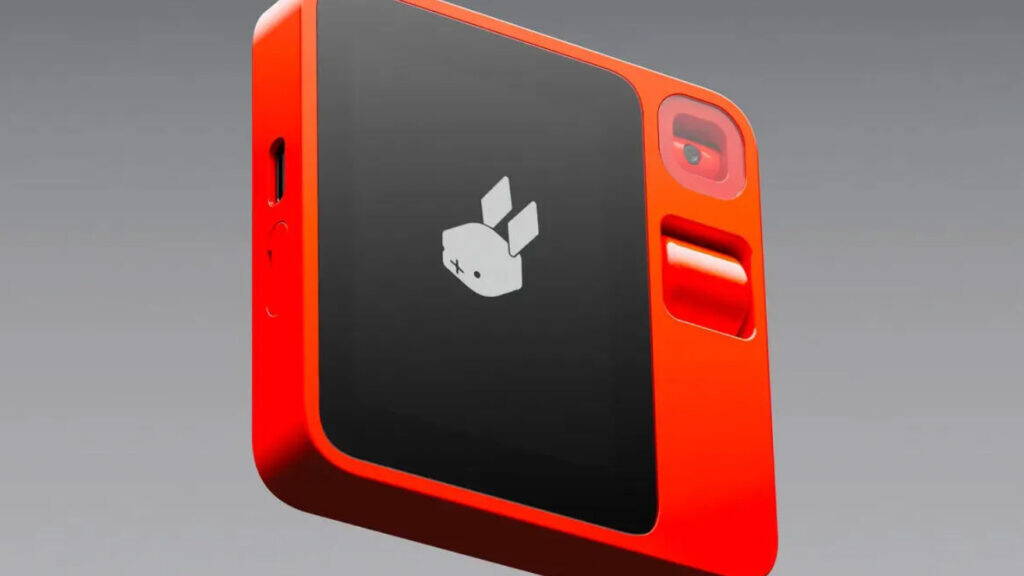
Rabbit R1
Rabbit R1 has been designed to allow people to communicate with artificial intelligence – not through a cell phone, but through a small box clipped to clothing.
You can control music playback, order food and cabs, and book travel by giving voice commands. Just press the button on the front of the device and tell R1 what you want to do. The AI assistant will execute the command using an app in the cloud. With the built-in camera, you can take pictures like a smartphone, recognize objects, etc.
The gadget cost $199, and the first 20,000 units were quickly sold out. However, Rabbit R1 is not the only assistant of this type. The first one on the market was AI Pin, which works on the same principle.
Ring as jewelry and health sensor. Nobody knows you are optimizing your life.

Amazfit Helio Ring
During CES, there was no shortage of booths with smart rings. The hype around them was boosted by rumors of Samsung's Galaxy Ring launch, which did not happen. However, Amazfit revealed the Amazfit Helio Ring – a new wearable to "optimize sports performance."
Chinese company Umeox, on the other hand, unveiled the Xring, which promises to measure not only traditional health parameters, such as heart rate, sleep patterns, and blood oxygen levels, but also parameters previously unavailable to e-rings, such as blood glucose levels, using a PPG sensor and AI algorithm. There have been many more devices with non-invasive measurement of blood sugar levels, but their accuracy is questionable.
Non-invasive, drug-free treatment of hand tremors.
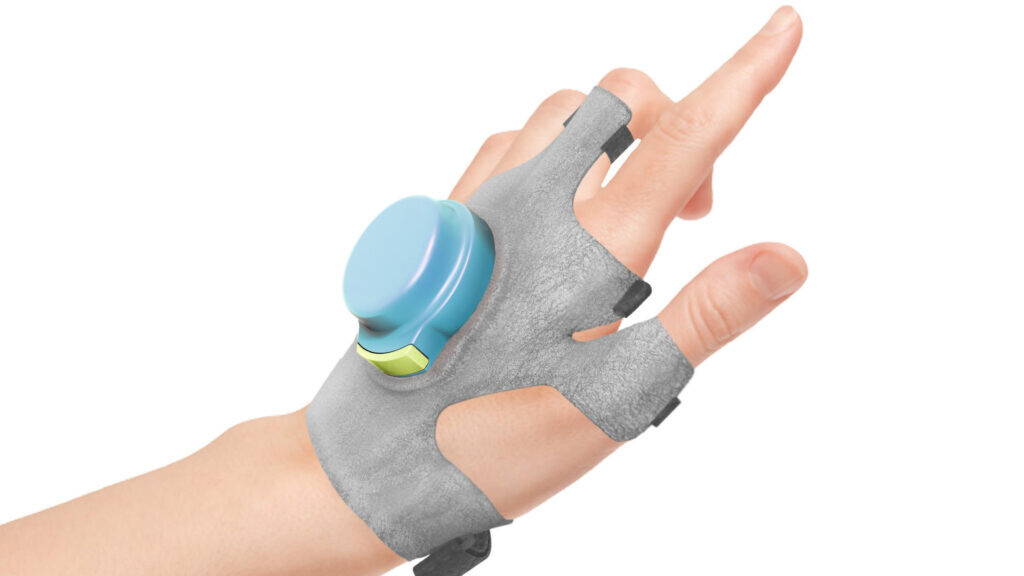
GyroGear
People with Parkinson's disease face a troublesome spontaneous tremor in their hands that prevents them from functioning normally, leading to gradual social isolation. A spoon has already been developed to cushion the tremor, and now a special glove.
GyroGear counteracts tremors in real time using advanced gyroscopic technology without drugs or side effects. The non-invasive device resembles a fingerless glove with a control cap at the top, which can be easily detached and recharged. A small gyroscope, controlled by an electronic circuit sewn into the material, detects tremors and activates electric signals.
Some people measure blood glucose to modify their diet. Is it ok?
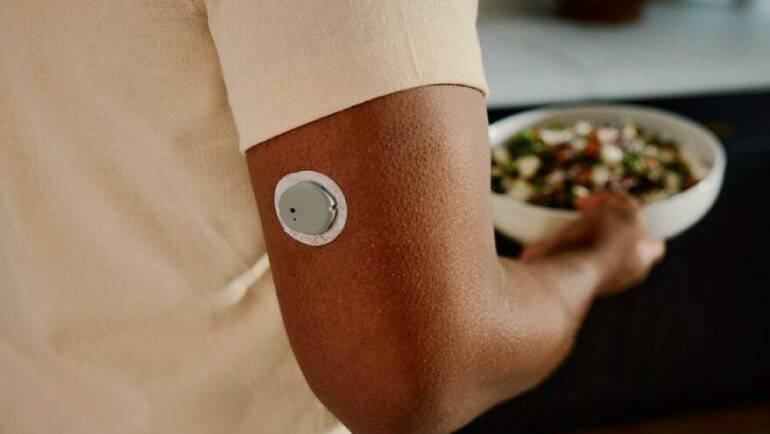
Dexcom
It has become increasingly more accessible for people with diabetes to monitor their blood sugar levels since small sensors attached to the skin have become available. They measure glucose levels in real-time and only need to be changed once every two weeks. The leader in this market is Abbott Freestyle Libre.
This new technology is also being widely used for non-medical purposes. Some manufacturers of CGM (Continuous Glucose Monitoring) devices outright promote their sensors as lifestyle products to help optimize diet, health, and athletic performance.
When combined with mobile apps, such systems collect blood sugar and suggest dietary changes. The goal is to avoid insulin spikes, followed by feelings of hunger, often leading to snacking. In this way, one can also learn, for example, that combining potatoes with chicken breast and vegetables in a meal triggers a lower glucose spike than eating just potatoes and chicken alone or that eating dinner earlier triggers a lower glucose spike.
The biggest barrier to the widespread availability of CGMs for non-diabetics remains price. For example, one has to pay around 65 euros out of pocket for the latest Abbott Freestyle Libre 3 sensor. But with increasing competition and announcements of the introduction of CGM into smartwatches, prices are coming down.
